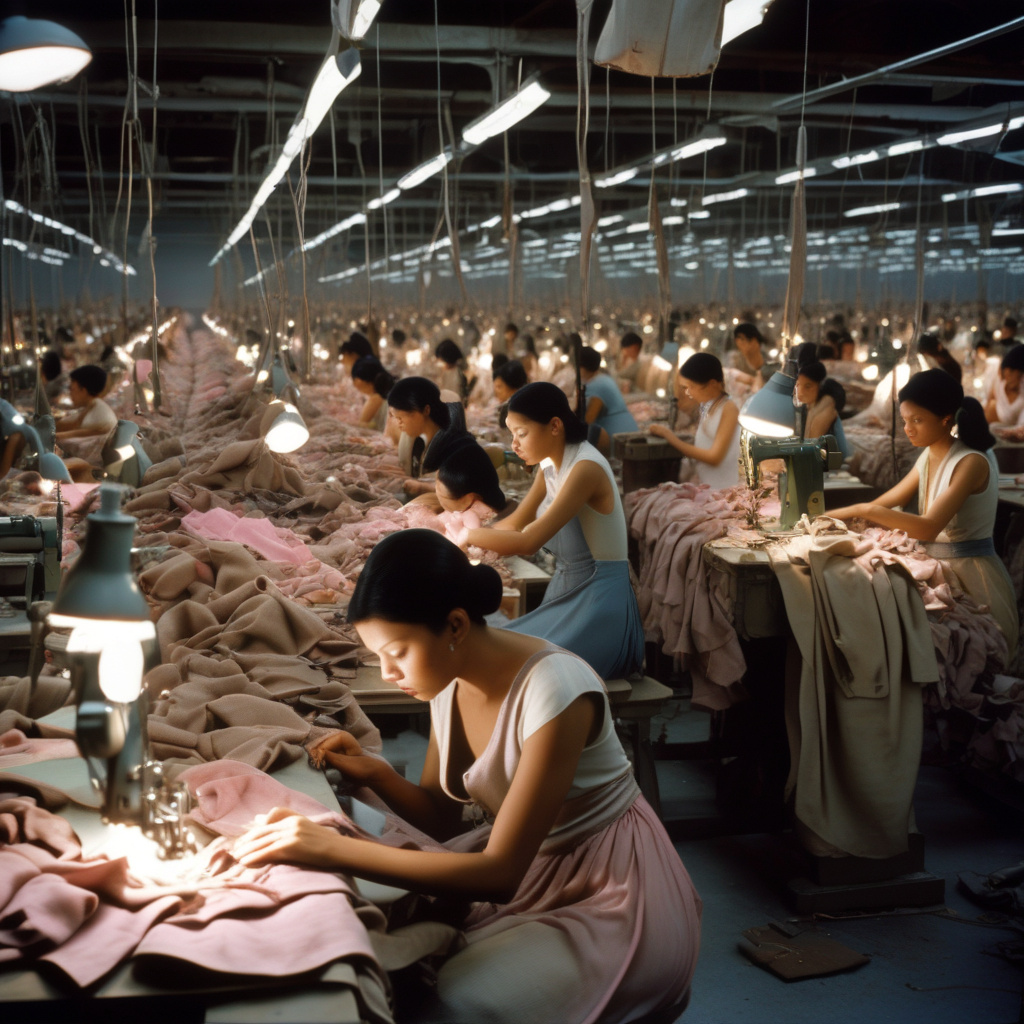A Slap on the Wrist Won’t Solve Luxury’s Sweatshops Problem
This week, Italy’s Competition Authority concluded its investigation into luxury fashion giant Dior, ultimately deciding that there was no evidence to support claims of misleading consumers regarding working conditions at its suppliers. While this outcome may appear to be a victory for Dior, the reality is far more complex. A new case involving Valentino has surfaced, linking the brand to poor labor practices, underscoring the ongoing challenges faced by the luxury fashion industry.
The luxury fashion sector is often perceived as a beacon of style and quality, yet beneath the gleaming surface lies a troubling reality. Reports of exploitative labor practices, including extremely low wages, unregulated working hours, and inadequate working conditions, are increasingly prevalent. The investigation into Dior may have concluded without any punitive action, but it serves as a reminder that the issues plaguing the industry are far from resolved.
Valentino’s recent troubles highlight this point. Allegations of poor labor conditions at its suppliers have reignited discussions around the ethical responsibilities of luxury brands. While the authorities may have cleared Dior, the question remains: what will it take for the industry to address these systemic issues thoroughly? A mere closure of an investigation does not equate to a solution.
Consumers are becoming more aware of the origins of their purchases. A growing segment of the market prioritizes ethical sourcing and transparency, pushing brands to adopt more responsible practices. According to a 2023 report by McKinsey & Company, 66% of global consumers are willing to pay more for sustainable products. This trend highlights a shift in consumer values and expectations, putting pressure on luxury brands to rethink their supply chains.
Despite this growing awareness, many luxury brands continue to rely on a patchwork of suppliers in countries with minimal labor protections. The allure of lower production costs often outweighs ethical considerations, leading to a cycle of exploitative practices. The case of Valentino serves as a stark reminder that luxury brands cannot ignore the impact of their sourcing decisions. As long as they prioritize profit over people, the specter of sweatshops will continue to haunt them.
The lack of accountability is another critical factor contributing to the persistence of poor labor practices. With no comprehensive regulatory frameworks governing the luxury fashion industry, brands can operate with a degree of impunity. The absence of stringent penalties for unethical practices means that the luxury sector often treats investigations as mere inconveniences rather than serious threats to their business models.
To truly address the sweatshop problem, luxury brands must implement robust transparency measures. This includes not only monitoring their direct suppliers but also holding accountable the entire supply chain. Independent audits, public reporting on labor conditions, and third-party certifications can help ensure that brands are genuinely committed to ethical practices. However, these measures must be more than just marketing tools; they need to be ingrained in the corporate culture of these luxury houses.
Consumer advocacy groups play a crucial role in pushing brands toward accountability. Organizations like Fashion Revolution and the Ethical Fashion Initiative are actively working to expose unethical practices and promote transparency in the fashion industry. Their campaigns have raised awareness and prompted consumers to question the origins of their purchases. As consumers demand more ethical choices, brands must respond or risk losing market share to more responsible competitors.
Moreover, collaboration among stakeholders, including brands, non-governmental organizations, and governments, is essential for creating a more sustainable luxury industry. Initiatives that bring together different actors can help establish best practices and share knowledge on ethical sourcing. Only through collective action can the industry hope to tackle the deeply rooted problems of exploitation and inequality.
In conclusion, the recent findings regarding Dior and the emerging issues surrounding Valentino highlight the complexities of addressing labor practices in the luxury fashion industry. A simple investigation closure does not equate to a solution for the systemic issues at play. The luxury sector must move beyond superficial measures and take meaningful action to ensure ethical labor practices throughout their supply chains. As consumer awareness and activism continue to rise, the pressure on luxury brands to adopt responsible practices will only intensify. The time for genuine change is now, and the industry must rise to the challenge.
#LuxuryFashion #EthicalSourcing #LaborRights #Sustainability #ConsumerAwareness
